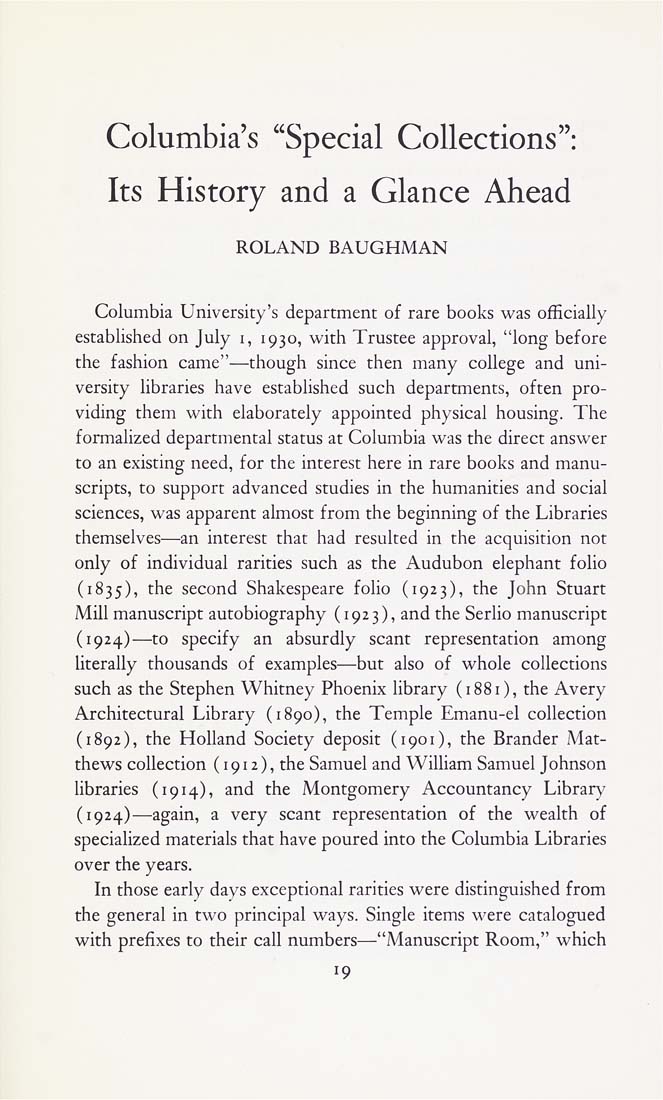Columbia Library columns (v.14(1964Nov-1965May))
(New York : Friends of the Columbia Libraries. )
|
||
|
|
|
|
| v.14,no.2(1965:Feb): Page 19 |

Columbia's "Special Collections": Its History and a Glance Ahead ROLAND BAUGHMAN Columbia University's department of rare books was officially established on July i, 1930, with Trustee approval, "long before the fashion came"—though since then many college and uni¬ versity hbraries have established such departments, often pro¬ viding them with elaborately appointed physical housing. The formalized departmental status at Columbia was the direct answer to an existing need, for the interest here in rare books and manu¬ scripts, to support advanced studies in the humanities and social sciences, was apparent almost from the beginning of the Libraries themselves—an interest that had resulted in the acquisition not only of individual rarities such as the Audubon elephant folio (1835), the second Shakespeare folio (1923), the John Stuart Mill manuscript autobiography (1923), and the Serlio manuscript (1924)—to specify an absurdly scant representation among literally thousands of examples—but also of whole collections such as the Stephen Whitney Phoenix library (1881), the Avery Architectural Library (1890), the Temple Emanu-el collection (1892), the Holland Society deposit (1901), the Brander Mat¬ thews collection (1912), the Samuel and William Samuel Johnson libraries (1914), and the Montgomery Accountancy Library (1924)—again, a very scant representation of the wealth of specialized materials that have poured into the Columbia Libraries over the years. In those early days exceptional rarities were distinguished from the general in two principal ways. Single items were catalogued with prefixes to their call numbers—"Manuscript Room," which 19 |
| v.14,no.2(1965:Feb): Page 19 |







